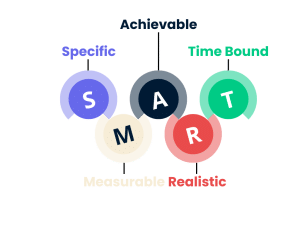The Best Project Management Software by Categories

As we've seen, choosing the best project management software largely depends on your goals and needs. To learn more, read our article: How to choose the best project management software for your team?
Also, once you've chosen the best project management software for your team, you need to know how to use it to get the most out of it. We explain it here in detail.
The best project management tools
Below is a ranking of the best platforms and tools, based on the company's priorities.
| Project Software | Perfect for... | Strengths | Weaknesses |
|---|---|---|---|
| Teamgantt | project planning via Gantt charts | Ease of use makes it easy to adopt the tool. | The mobile version is more limited and offers less usability than the desktop version, according to some user reviews on GetApp. |
| Microsoft Project | projects that require high, fluid and agile communication. | Graphs and data | Dependency on the Windows operating system, which limits its use on other platforms. |
| Jira | Projects based on development tickets | Versatility | High learning curve |
| Stafiz | Ensure optimal accounting and resource planning | Reliable, real-time data to ensure profitability | Integration with banking apps is not possible |
| Airtable | Secure project documentation | Suitable for any size of business | Some features can be complex to activate on first contact. |
| Notion | organize, document, and collaborate on projects | Available models, versatility of the tool with many types of views | Lack of BI-type analysis tool to effectively monitor projects |
| Pipefy, Process street | Describe and develop automated workflows with validation circuits. | Improved efficiency and quality of processes across entities | Rigid and cumbersome processes |
How to get the most out of a project management tool?
Have you chosen the tool you need? Now, let's take a look at how to get the most out of it.
1. Set SMART goals
The first rule of thumb is to set SMART goals. These are 'Specific', 'Measurable', 'Achievable', 'Realistic' and 'Time Bound'. It translates to "Specific", "Measurable", "Achievable", "Realistic" and "Time-bound".

Setting SMART goals
Our article: how to choose the best project management software? detailed the KPIs that can be tracked according to your goals to move the project forward quickly and cost-effectively. The SMART methodology states that KPI numbers should be concrete, measurable, achievable, realistic, and time-bound.
2. Communicate effectively
Getting clear messages across is a task that falls to the project manager or project manager. The project manager can provide a communication channel. But the message and communication style are provided by the project manager.
In addition to being clear and concise, it is important to base communication on two other values: leading by example and motivating.
To follow a leader, he or she must set an example. It is difficult to get the maximum involvement and effort of employees if the manager or manager accumulates several unjustified absences, to give an example.
On the other hand, it is important that this person is able to motivate and provide useful information and incentives. This is the only way to get committed teams that are able to give their best, which will increase the profitability of the project and the achievement of objectives.
3. Ensure good follow-up
The project management tool will provide us with key data and alerts that will help us do this. But there are a series of specific parameters that we need to pay close attention to, as they are the ones that provide us with the clearest information to know if something is not moving in the right way:
- Costs.
- Margins.
- Estimated work hours for the entire project.
- Hours of work really invested.
- Estimated execution time for each task.
- Time really invested in each of them.
Follow our guide for effective project monitoring.
4. Respect the steps of project management
In order to have a solid foundation, a series of preliminary work and planning are necessary. There are five phases of project management that need to be considered:
- Preparation. We need to establish what the company's vision is and what the goals are. Risks and expected outcomes must also be identified. To do this, a feasibility study must be carried out in this phase in which the objectives are defined, a timetable for achieving them and the estimated costs.
- Planning. If the project is approved, it is necessary to divide it into tasks, assigning responsibilities and deadlines. This phase also includes human and technical resource planning and financial planning. And, cross-cuttingly, it is also necessary to anticipate the risks or weaknesses that will have to be overcome, and how this will be done.
- The execution. All of the above planning is implemented. It's time to coordinate teams, communicate goals, and address needs derived from early work.
- Follow-up. It is very important to monitor the time, resources and costs that are actually invested, to ensure that the roadmap is adhered to.
- Fence. This stage includes a review of the overall and individual performance of all those involved in the project. It is important to make an honest assessment, in order to detect possible improvements to be applied in other projects. From a budgetary point of view, it is important to check whether the profitability assumptions initially established have also been respected.
5. Keep an eye on these other aspects
In addition to those mentioned above, there are other causes of project failure that must also be taken into account:
- Failure to check the availability of resources, expenses and progress. The follow-up phase is essential and must be daily. Slackening the follow-up phase can lead to situations with no return that can ruin the project. This is one of the most valuable features of a project manager, as it allows this tracking to be done efficiently and in the blink of an eye. It also facilitates the reallocation of resources and the rapid communication of changes.
- Lack of leadership. Tools and resources may be adequate and... The problem may lie in the lack of involvement of the management.
- The fact of not including a percentage of risk. When a business plans a budget, it should include a percentage of risk for contingencies that may require unplanned investments.
- Lack of coordination. The management, the project manager and the team must work in unison. A project management tool allows real-time access to all information, which is undoubtedly a great way to ensure that everyone is aware and coordinated of the actions to be taken. This is particularly critical in projects with interdepartmental or interrelated tasks.
- Don't automate alerts to prevent possible delays or cost overruns. Good project management software will allow alerts to be set up so that managers are notified of any schedule anomalies a second after they occur.
- Prioritize cost savings. Sometimes, reducing expenses becomes a priority, as it is seen as a way to optimize project resources. However, an excessive reduction in resources can unnecessarily lengthen the work. In the long run, this will actually generate more costs than you're trying to avoid.
- Not being open to change. The analysis and planning phase is essential. But the circumstances in which they were carried out are changing. It is important to be flexible and to be able to make decisions during the project to correct the effect of external factors on the project's results.
Conclusion
Therefore, companies must first determine which KPIs they should prioritize. They then need to check which project managers incorporate the most appropriate features and tasks to achieve them.
Without losing sight of a whole series of global recommendations that make it possible to meet time and profitability objectives.
Such as, for example, carrying out proper planning, exhaustive follow-up or carrying out a realistic, data-driven final analysis. These are issues for which the project manager becomes a fundamental ally, capable of accelerating and optimising the management of work and, therefore, stimulating the growth of the company.